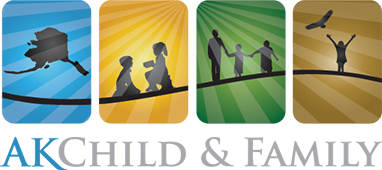What follows is a picture of Unalaska that I took in about 1967-8 when we were beginning to look at the possibility of doing a sort of low-key community organizing job there. Dorothy Jones of the University of Alaska in Fairbanks and Mary Lee Nicholson (then the director of The Alaska Department of Children and Families office in Anchorage) asked for our help when The Alaska Department of Children and Families staff had to remove, in a single one-day visit, 25 children from Unalaska because their families were considered too fragmented to care for them. That was one quarter of all the kids in Unalaska. Dorothy and Mary Lee came to us, in part, because of the historic connection between Unalaska and Jesse Lee Home.
So I visited. The attached is a picture taken from the cemetery hill high above the town and looks back at the whole town of Unalaska. The original Jesse Lee Home is hidden just below the crest of the hill.
If you look closely, you can see the Aleut section of the cemetery in the mid-distance. It is distinguished by the crosses with the round tops and/or the slanted second bar. That's based on the *Russian Orthodox tradition that Jesus had one leg shorter than the other, so that his feet could not be held by a single nail.
In the foreground is the Protestant part of the cemetery (see the traditional cross). The fenced burial site is of Agnes "Mama" Newhall who, with her husband, Albert, co-founded the Jesse Lee Home there. Not sure whether she had lost a child, but there is a smaller headstone next to hers.
We did go ahead with the project. Over the course of their time there, Robert and Flora Fulton managed to return all but three of the kids to intact homes in Unalaska (JLH's Boris [John] Galaktionoff being one of them). The Fultons were also instrumental in the formation of Iiuliuk Family and Health Services (www.ifhs.org/) under the auspices of the Indian Health Service.
--Richard Gilbert
*According to “A Reader’s Guide to Orthodox Icons,” below is the explanation of the Orthodox cross.
The three-barred Cross, as shown above is the most common shape used in the Orthodox Church – whether as simple adornments, crucifixes, or in Icons which show the Cross, the three bars are usually present.
The short, extra top bar represents the sign nailed to Christ’s Cross, which read: THIS IS THE KING OF THE JEWS (Luke 23:28; in John’s Gospel the sign reads: “Jesus of Nazareth, King of the Jews”)
The lower, slanted, bar is the foot-rest of the crucifix. All crucifixes would have had these, as no one could be suspended from a cross by nails alone. The cruel death of a crucifixion was not brought about through blood loss, but by lack of oxygen: exhausted, the man is no longer able to stand straight upon the foot-rest, the body sags, and air can no longer be drawn in.
The foot-rest of Christ’s Cross is slanted because it is believed that in the final moments before Jesus gave up His spirit, His flesh spasmed and the foot-rest was kicked out of place. But in this true event there is also symbolism. The foot-rest points up, toward Heaven, on Christ’s right hand-side, and downward, to Hades, on Christ’s left. One of the Orthodox Church’s Friday prayers clearly explains the meaning:
In the midst, between two thieves, was Your Cross found as the balance-beam of righteousness;
For while one was led down to hell by the burden of his blaspheming,
The other was lightened of his sins unto the knowledge of things divine.
O Christ God glory to You
